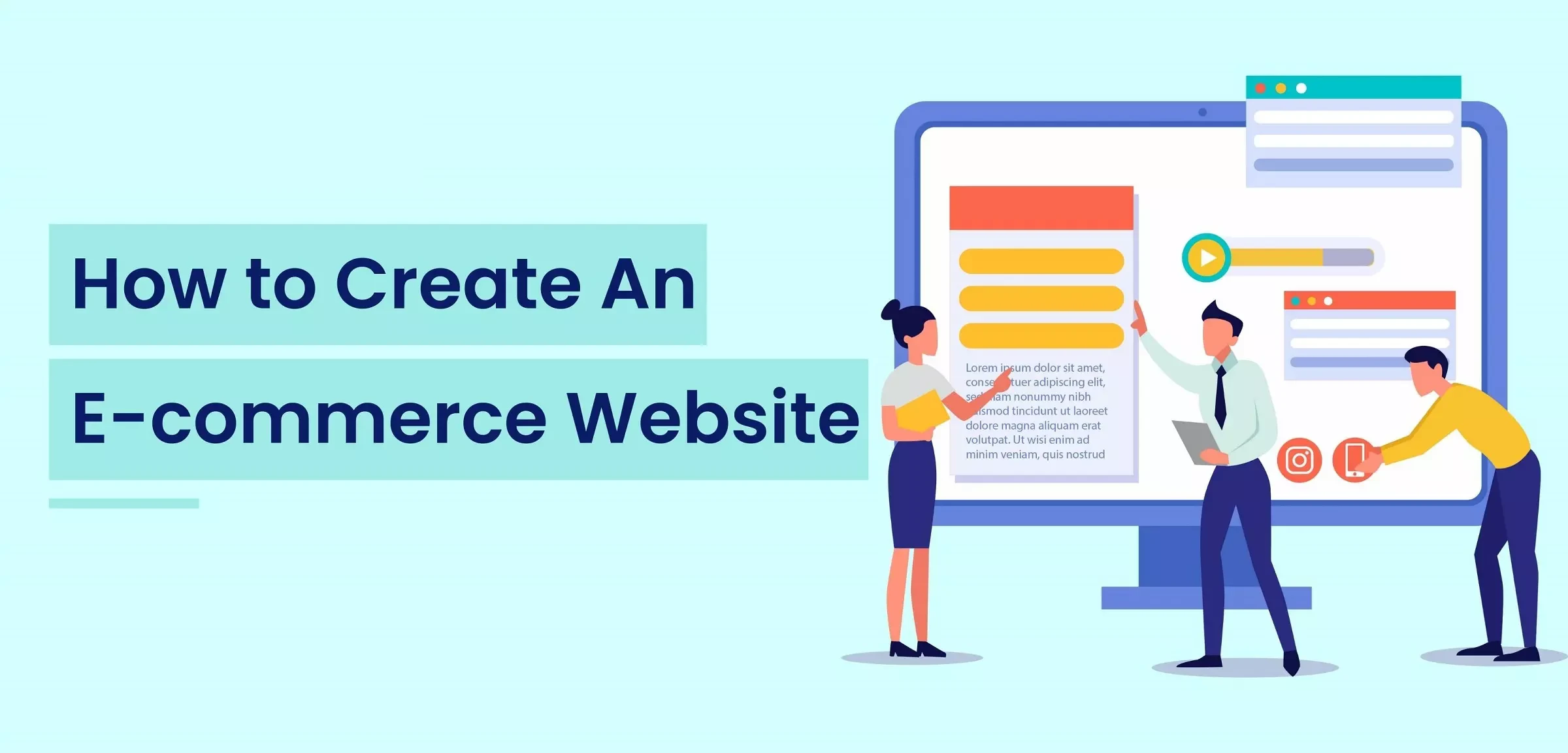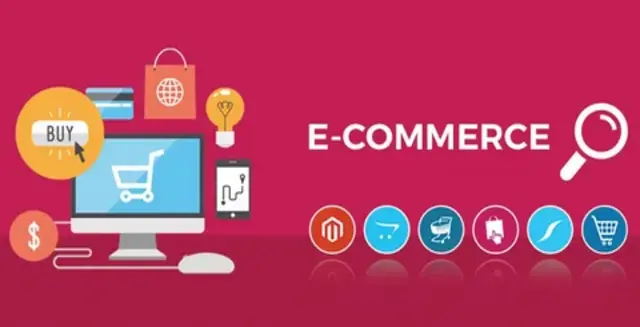We'll cover what e-commerce website creation comprises, the procedures involved, the characteristics of successful e-commerce sites, and how to collaborate with an e-commerce development company in this extensive tutorial. Whether you're an entrepreneur preparing to start a new business or a small business owner hoping to grow online, this book will provide you with the knowledge you need to develop a strong e-commerce website in 2024. In this digital age, businesses of all sizes must be online, and the creation of e-commerce websites is at the core of this change, allowing companies to access a worldwide clientele and provide a frictionless buying experience.
What is E-commerce Website Development?
Developing an online storefront where companies may offer goods or services to consumers is known as e-commerce website development. This procedure entails creating a product catalog, putting payment methods in place, designing the user experience, and ensuring the website is safe and easy to use. The aim is to make a website that draws in visitors and turns them into paying clients. E-commerce website creation involves more than simply website construction; it also entails developing a compelling online shopping environment that satisfies the demands of the company's clientele.
How to Develop an E-commerce Website
There are several essential steps in developing an e-commerce website. Here is a detailed explanation of the procedure to aid in your understanding:

Planning and Research
Determine who your target audience is and get familiar with their requirements and preferences first. To evaluate your competition and find opportunities, do market research. Establish your company's objectives and draft a comprehensive strategy that describes the features, functions, and structure of your website.
Choose a Platform
Choosing the appropriate platform is essential for developing e-commerce websites. Magento, BigCommerce, WooCommerce, and Shopify are well-liked choices. Every platform has advantages and disadvantages, so pick the one that best suits your needs as a business and your budget.
Design the User Interface
Your e-commerce website should have an intuitive and visually appealing design. Concentrate on developing a simple, user-friendly layout that improves the user experience. A professional designer might be hired, or you might use the pre-made templates on the platform of your choice.
Set Up a Product Catalog
Put your products in groups and subgroups so that customers can easily find what they're looking for. Provide each product with clear pricing information, thorough descriptions, and excellent photos.
Implement Payment Gateways
Make sure that your website accepts a variety of payment methods, such as PayPal, credit/debit cards, and other e-wallets. Select a safe payment gateway that preserves client data and conforms with industry regulations.
Optimize for SEO
Implement SEO best practices to improve your website's visibility on search engines. Use relevant keywords, optimize product descriptions, and ensure your site loads quickly and is mobile-friendly.
Test and Launch
Before launching your e-commerce website, conduct thorough testing to identify and fix any issues. Test the functionality, usability, and performance of your site on different devices and browsers. Once everything is in place, launch your website and start promoting it to your target audience.
Qualities of Successful E-commerce Sites
Successful e-commerce websites share several key qualities that set them apart from the competition:

User-Friendly Design
A flawless shopping experience depends on having a user-friendly design. Make sure your website has easy-to-use menus, a user-friendly search engine, and simple checkout procedures.
Mobile Responsiveness
With the increasing use of mobile devices, your e-commerce website must be fully responsive. A mobile-friendly site ensures that customers can shop on their smartphones and tablets without any issues.
Fast Loading Speed
Both search engine rankings and user experience are greatly impacted by website speed. Make your website as fast-loading as possible to cut down on the number of people who leave their shopping carts empty.
High-Quality Product Images and Descriptions
Give each product a thorough description and crisp, high-resolution photos. In addition to lowering the possibility of returns, this assists clients in making knowledgeable purchases.
Secure Payment Processing
In e-commerce, security is crucial. Employ SSL certificates and safe payment mechanisms to safeguard client information and foster audience trust.
Customer Support
Provide first-rate customer service using a variety of channels, such as phone, email, and live chat. To improve the client experience, give precise information about shipping, returns, and refunds.
Options for Building an E-commerce Site
When it comes to building an e-commerce website, you have several options:

DIY Platforms
With the help of user-friendly interfaces and pre-designed templates, e-commerce website builders such as Shopify, WooCommerce, and BigCommerce enable even non-technical people to create a website.
Hiring a Freelancer
Seek the services of a freelance web developer if you would rather have a more personalized solution. Freelancers can offer customized features and designs that are suited to your particular requirements.
Working with an Ecommerce Development Company
A wonderful choice for a thorough and professional strategy is to work with an e-commerce development business. These businesses offer groups of skilled marketers, developers, and designers who can work together to build an entirely personalized e-commerce website that complements your corporate objectives.
How to Work with an E-commerce Developer
A high-quality outcome can be ensured and the website creation process streamlined by working with an e-commerce developer. These pointers will help you collaborate with an e-commerce developer more successfully:
Define Your Requirements
Make sure the developer knows your exact needs, target market, and business objectives. Give instances of your favorite websites and describe the characteristics and functionalities you require.
Set a Budget and Timeline
Give the project a budget and a schedule. To prevent any misconceptions, make sure you and the developer agree on the pricing and dates.
Maintain Regular Communication
Maintain constant communication with the developer during the project. Give input on designs and developments, and quickly resolve any issues to keep the project moving forward.
Test and Review
Take part in the testing and evaluation stages to find any problems or potential solutions. Give the developer helpful criticism so they may improve the website before it launches.
Plan for Ongoing Maintenance
Talk to the developer about maintenance and support after the launch. Make sure you have a strategy for maintaining the website, addressing issues, and adding new features as they arise.
Your E-commerce Business Starts with a Website
The cornerstone of your internet business is your e-commerce website. It functions as the main channel of communication between you and your clients. Investing in the building of a professional e-commerce website allows you to establish a platform that looks amazing and works flawlessly, giving your customers an amazing shopping experience.
Conclusion
Developing an e-commerce website is essential to starting a profitable internet business. Through comprehension of the necessary procedures, identification of the characteristics of prosperous e-commerce websites, and expertise in collaborating with e-commerce development firms, you can produce a website that stimulates expansion and fulfills your corporate objectives. Are you prepared to launch your online store? Join On Wave Group right now to get help with e-commerce development services and to begin your online success path. Check What Is ECommerce Integration? to learn more.

